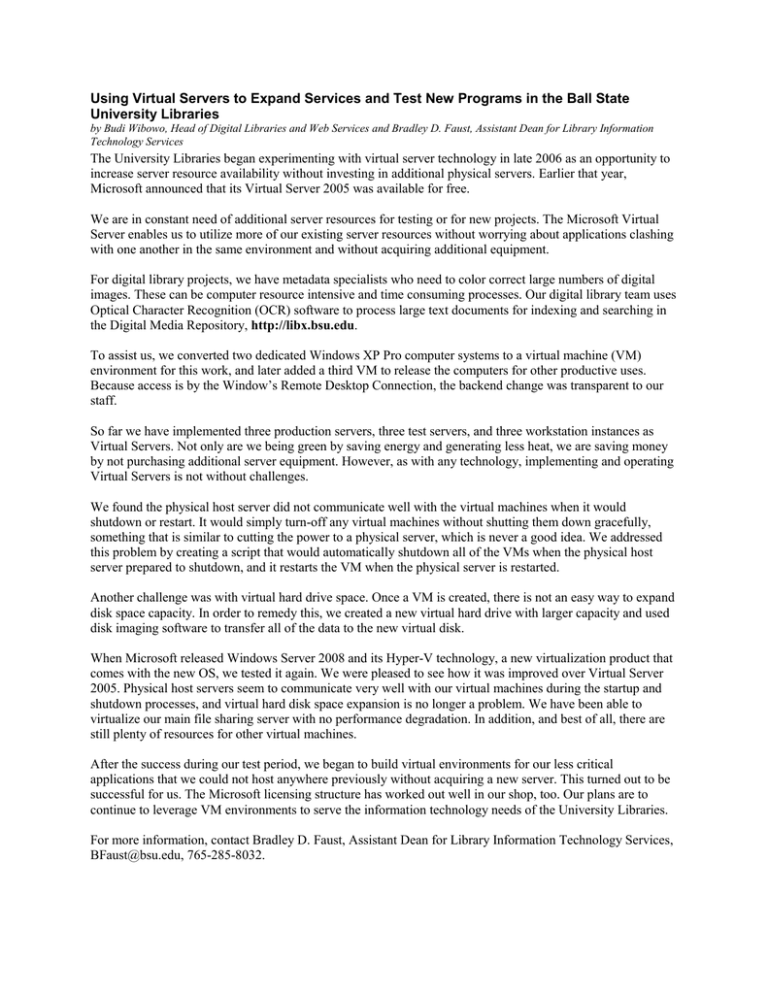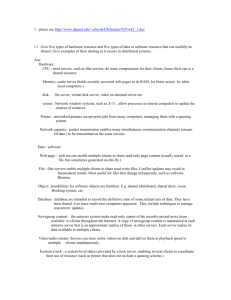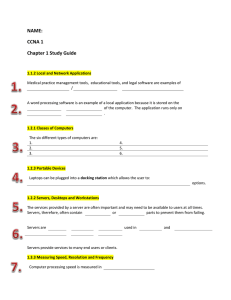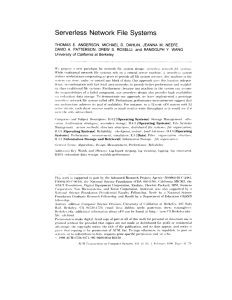Using Virtual Servers to Expand Services and Test New Programs... University Libraries
advertisement

Using Virtual Servers to Expand Services and Test New Programs in the Ball State University Libraries by Budi Wibowo, Head of Digital Libraries and Web Services and Bradley D. Faust, Assistant Dean for Library Information Technology Services The University Libraries began experimenting with virtual server technology in late 2006 as an opportunity to increase server resource availability without investing in additional physical servers. Earlier that year, Microsoft announced that its Virtual Server 2005 was available for free. We are in constant need of additional server resources for testing or for new projects. The Microsoft Virtual Server enables us to utilize more of our existing server resources without worrying about applications clashing with one another in the same environment and without acquiring additional equipment. For digital library projects, we have metadata specialists who need to color correct large numbers of digital images. These can be computer resource intensive and time consuming processes. Our digital library team uses Optical Character Recognition (OCR) software to process large text documents for indexing and searching in the Digital Media Repository, http://libx.bsu.edu. To assist us, we converted two dedicated Windows XP Pro computer systems to a virtual machine (VM) environment for this work, and later added a third VM to release the computers for other productive uses. Because access is by the Window’s Remote Desktop Connection, the backend change was transparent to our staff. So far we have implemented three production servers, three test servers, and three workstation instances as Virtual Servers. Not only are we being green by saving energy and generating less heat, we are saving money by not purchasing additional server equipment. However, as with any technology, implementing and operating Virtual Servers is not without challenges. We found the physical host server did not communicate well with the virtual machines when it would shutdown or restart. It would simply turn-off any virtual machines without shutting them down gracefully, something that is similar to cutting the power to a physical server, which is never a good idea. We addressed this problem by creating a script that would automatically shutdown all of the VMs when the physical host server prepared to shutdown, and it restarts the VM when the physical server is restarted. Another challenge was with virtual hard drive space. Once a VM is created, there is not an easy way to expand disk space capacity. In order to remedy this, we created a new virtual hard drive with larger capacity and used disk imaging software to transfer all of the data to the new virtual disk. When Microsoft released Windows Server 2008 and its Hyper-V technology, a new virtualization product that comes with the new OS, we tested it again. We were pleased to see how it was improved over Virtual Server 2005. Physical host servers seem to communicate very well with our virtual machines during the startup and shutdown processes, and virtual hard disk space expansion is no longer a problem. We have been able to virtualize our main file sharing server with no performance degradation. In addition, and best of all, there are still plenty of resources for other virtual machines. After the success during our test period, we began to build virtual environments for our less critical applications that we could not host anywhere previously without acquiring a new server. This turned out to be successful for us. The Microsoft licensing structure has worked out well in our shop, too. Our plans are to continue to leverage VM environments to serve the information technology needs of the University Libraries. For more information, contact Bradley D. Faust, Assistant Dean for Library Information Technology Services, BFaust@bsu.edu, 765-285-8032.




